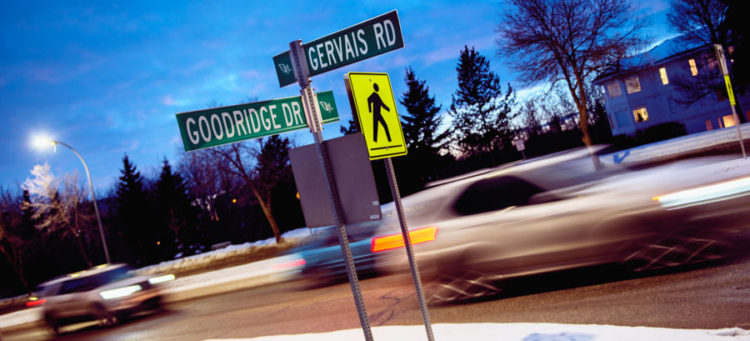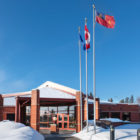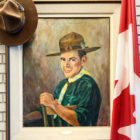
Then & Now
St. Albert’s Southwest Street Names
February, 2019
Navigating St. Albert’s roadways can be confusing for newcomers who are used to a numbered grid. But there is a logic and order in the alphabetized groupings of streets that makes sense to long-time local residents. And while many streets are seemingly named only for their first letter and pleasant sound, there are interesting historical references hidden within our streets.
Here are the origins of some of the names we see every day as we drive around town. This list covers the streets in the southwest quadrant of the city, everything south of the Sturgeon River and west of St. Albert Trail.
Galarneau Place is named for Baptiste Galarneau, the first toll keeper of St. Albert’s bridge. The original bridge, which spanned the Sturgeon River, is said to have been the first bridge west of the Great Lakes.
Garnett Drive is said to be named for Lieutenant Colonel Charles E. Garnett, a veteran of the Second World War and prominent businessman in St. Albert.
Gate Avenue is named for André Gate, a citizen of St. Albert from 1959 to 1960. Gate was a horticulturist from France who served as director of St. Albert’s Parks Department. He was responsible for creating a greenhouse and tree-nursery program, which helped St. Albert gain its reputation as a botanical city.
Gervais Road is named in honour of Hector Gervais, a world champion curler who was born in St. Albert in 1933.
Grandin Road, as well as the entire Grandin community, is named after Bishop Vital Grandin. He was the first Bishop of St. Albert, serving from 1868 until his death in 1902.
Grenier Place is named for Arthur and Maria Grenier, an early settler couple who were the original owners of Riverlot 35.
Harriott Court is reportedly named for John Edward Harriott, representative of the Hudson Bay Company who served the area around Edmonton and St. Albert from 1834 to 1854.
Holmgren Crescent is named for Bror Holmgren, a Swedish immigrant to St. Albert and co-owner of the Starkey Coal Mine.
LeClair Way is named for John E. LeClair, St. Albert’s tenth mayor.
Levasseur Road is named for Leon Levasseur, St. Albert’s fifth mayor who served a one-year term in 1911. Levasseur is remembered for stimulating business in St. Albert’s early days.
Perron Street is named after Fleuri Perron, St. Albert’s second mayor who was responsible for a large area of urban development. It was formerly (pre-1967), and coincidentally, called Piron Street after a family in France who donated bells to the St. Albert Mission.
Ray Gibbon Drive is named in honour of Mayor Ray Gibbon, who held office from 1968 to 1974. Gibbon helped turn St. Albert into the booming community that it is known as today.
Sir Winston Churchill Drive is named for the former war-time Prime Minister of Britain. The road was named in 1965, after Churchill’s death. At the time, it was quite common in Alberta to name city features in his honour.
Taché Street is named for Bishop Alexandre-Antonin Taché, the Archbishop of St. Boniface, Manitoba, and travelling companion of Father Lacombe. Reportedly, it was Bishop Taché who came up with the name of St. Albert, choosing to name it after Father Lacombe’s patron saint.
St. Anne, St. Thomas, and St. Joseph Streets are all biblical references, characteristic of St. Albert’s early days as a Roman Catholic mission. While St. Joseph and St. Thomas have no specific connection to St. Albert, St. Anne does. Before the St. Albert mission was established, Father Lacombe lead a mission at Lac St. Anne. When he founded St. Albert, many of the residents of the Lac St. Anne mission came with him. t8n
Fun Fact
The current subdivisions in St. Albert only use 20 letters of the alphabet. There is still room for subdivisions with street names starting with Q,T,U,X,Y and Z. Despite this, the two newest developments in St. Albert, Avenir and Elysian Fields reuse letters already in use by Akinsdale and Erin Ridge.
Did You Know?
While many former residents of St. Albert share surnames with streets around the city, many of these name commonalities are just coincidences. Still, while there may have been no conscious effort by city planners to honour these citizens, these coincidences often push local researchers to investigate, adding to the city’s collective
historical knowledge.













